Odie's Oil - the Finish of Choice to Endure Harsh Conditions at NOAA's New Antarctica Marine Research Facilities
Posted by Department of Architecture at Colorado University Denver on Sep-20-2023

HOLT WATTERS FIELD CAMP
The National Oceanic and Atmospheric Administration (NOAA), National Marine Fisheries Service (NOAA Fisheries), Antarctic Ecosystem Research Division (AERD), located at the Southwest Fisheries Science Center (SWFSC), has conducted integrated ecosystem assessments around the Antarctic Peninsula and South Shetland Islands since 1986. AERD manages and implements the U.S. Antarctic Marine Living Resources Program (U.S. AMLR Program). The principal objective of the U.S. AMLR Program is to collect data and perform analyses that form the basis of scientific advice relevant to management of all fisheries in the Southern Ocean, with a particular emphasis on the Antarctic krill fishery.
For over 20 years, four to eight NOAA staff have occupied Cape Shirreff during Antarctica’s austral summer (approximately October to March), conducting scientific research on the population dynamics, behavior, diet, and survival of Antarctic seabirds (e.g., skuas, gulls, and penguins) and pinnipeds (fur seals and seals). Because of the COVID-19 pandemic, 2020 was the first year the camp was not occupied since it was built. The camp was reopened for an abbreviated field season in December 2021. Each year, researchers have made repairs to extend the life of the structures; however, the camp has now degraded beyond the point of repair, and thus requires replacement.




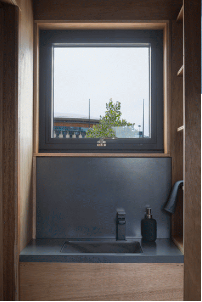

PROJECT TIMELINE
| Timeline | Activity |
|---|---|
| Fall ‘21 | Research |
| Jan–Apr ‘22 | Design + fabrication |
| May ‘22 | Construction in Denver |
| Jun ‘22 | Public exhibition |
| Jul ‘22 | Disassembly + shipping |
| Winter ‘22 | Reassembly at Cape Shirreff |
| Timeline | Activity |
|---|---|
| Fall ‘22 | Research |
| Jan–Apr ‘23 | Design + fabrication |
| May ‘23 | Construction in Denver |
| Jun ‘23 | Public exhibition |
| Jul ‘23 | Disassembly + shipping |
| Winter ‘23 | Reassembly at Cape Shirreff |
MAKING A HOME FOR TRAILBLAZING SCIENTISTS

GEORGE WATTERS, PHD

HEIDI TAYLOR

DOUG KRAUSE, PHD

JEFFERSON HINKE, PHD

LOUISE GIUSEFFI
CONSERVING ANTARCTIC MARINE LIFE THREATENED BY OVERFISHING & CLIMATE CHANGE

Pinnipeds
Antarctic Fur Seals, Elephant Seals, Leopard Seals
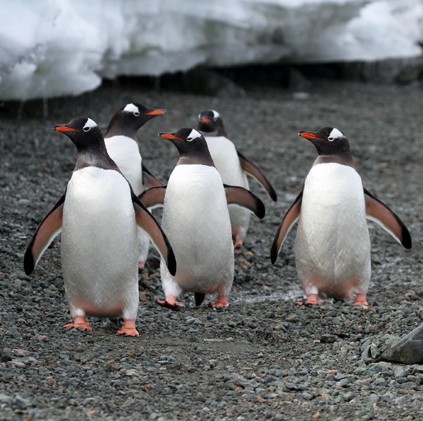
Seabirds
Gentoo Penguins Chinstrap Penguins Adélie Penguins
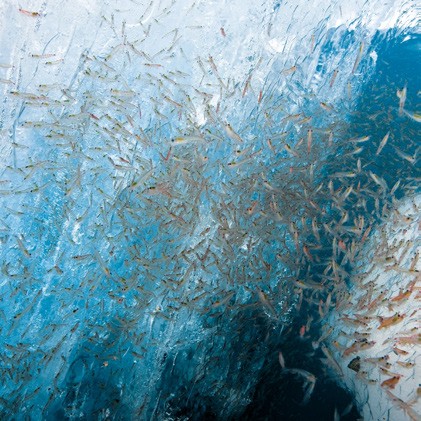
Antarctic Krill
The critical base of the food chain
EVALUATION OF ODIE'S OIL - IN REGARDS TO NOAA'S CAPE SHIRREFF FIELD STATION
In 2021, NOAA Fisheries awarded a contract for the replacement of the facilities at Cape Shirreff to a partnership of three entities, including a new, woman-owned small business, Bespoke Project Solutions, an award-winning architecture firm, OZ Architecture, and the Colorado Building Workshop’s design build certificate program for students pursuing a Master of Architecture degree within the Department of Architecture at CU Denver. The scope and design of the rebuild project include flat-packable prefabricated structures, weather-resistant construction, an off-grid power system, and housing and laboratory space for 8 scientists. The new buildings will enable the continuation of NOAA Fisheries’ long-term science-based, ecosystem-based approaches to management in the Southern Ocean.
Well as a part of this endeavor, it was necessary to rigorously test and vet each material and finish that was a part of the new buildings to provide the utmost quality for the harsh Antarctic environment, including the wood finishing oil used on interior millwork and sheathing.
This was not a commissioned study. It was just a group of students, dedicated to finding the best products possible. Criteria evaluated throughout the wood finish studies tested included lead time, sustainability, appearance + experience, durability, low-maintenance, ease of application, transportation logistics, and cost. Studies occured rapidly, as the design development phase of the entire project (and finishing testing was a small part of the overall project) was only a month long.







EXISTING CONDITIONS
For 25 years, NOAA scientists have been using the existing Cape Shirreff facility to collect data on the marine ecosystem. But unmanageable leaks, black mold, and peeling paint threaten the scientists’ health and force them to spend countless hours on building maintenance instead of science. We want to change that.
The biggest issue the scientists faced with their previous facilities was the deterioration and subsequent maintenance of the interior. Black mold was a constant presence, and as such the field researchers would spend a huge portion of their valuable hours at the camp scraping the mold off floors and walls in their living quarters to establish a basic standard of living. The mold’s infestation was a product of several factors: the high relative humidity of the region, the propane heating system used within the camp, and the materials used to finish the interior. The base is situated on a rocky island off the northern tip of the Antarctic Peninsula. The maritime climate in the area is far milder and wetter than most of the continent, seeing temperatures generally hovering around freezing, frequent storms, and a relative humidity between 80-90%. As mold growth becomes significant above 40° F and above 19% RH, and far more significant above 65%, any structures built in this climate are at automatic risk for fungal decay if proper precautions are not taken. The propane heating system in the existing station did not serve to mitigate these risks, but exacerbated them by creating a warmer and more humid interior climate. For every lb of propane burned in a propane heater, between 1 and 1.6 lbs of water are released into the air. The subsequent condensation on the exterior walls creates a breeding ground for undesired microbes. The traditional stud-wall envelope has since deteriorated and requires constant scraping and repainting.

The design of the new facilities includes a far tighter thermal envelope and a heating and ventilation system that all but eliminates the concern of mold growth. Structurally Insulated Panels (SIPs) are used in floors, roofs and walls. The high R-values and limited thermal bridging keep condensation from forming on the interior, as does the Heat Recovery Ventilation (HRV) system installed. The HRV uses passive heat recovery as it ventilates the space, creating a thermally comfortable space while exchanging and dehumidifying internal air. HRVs can be expected to maintain an interior RH between 40-50%, greatly reducing the risk of mold while still reaching levels comfortable for humans. As the new building and heating systems minimize the effects of mold on the interior, the possibility of using warmer, richer wood products on the interior was no longer out of reach. Despite this, the preference for an additional layer of redundancy of combating fungal growth required that all interior finishing meet a significant level of resistance to decay.
Sources: Relative Humidity and its Affects on Mold Growth, NPS Museum Handbook. ERV Product Specs, FieldControls



TESTING FACTORS
As previously mentioned, testing occurred in a short period of time and finishes were quickly ruled out as to come to the best product in the shortest amount of time. Again, the bulk of the design development of this entire project was completed within the span of a month, so decisions needed to happen rapidly in order to stay on schedule. The factors that were considered for each product, in no particular order, included:
- ✔ LEAD TIME
- ✔ SUSTAINABILITY
- ✔ APPEARANCE + EXPERIENCE
- ✔ DURABILITY
- ✔ LOW-MAINTENANCE
- ✔ EASE OF APPLICATION
- ✔ TRANSPORTATION LOGISTICS
- ✔ COST
LEAD TIME
Again, this project was a tight turnaround. Any product that was not able to make it to the site in time, was immediately ruled out. There was no option for finishing the interiors ‘down the line.’
SUSTAINABILITY
This project had a high standard of sustainability. It was essential to the design team to select a product that was completely free of VOCs and harmful off gassing. Primary factors considered in evaluating environmental sustainability in regards to finishes were: reliance upon natural ingredients; lack of solvents and VOCs; durability/performance/maintenance; and cost. A product can not be truly sustainable unless it is both environmentally and economically sustainable. While many conventional definitions of sustainability tend to emphasize one over the other, Odie’s Oil made it possible for us to achieve a true balance between environment and economy.
APPEARANCE + EXPERIENCE
NOAA scientists travel to Antarctica every year, spending the holidays away from family for months at a time. The interiors team made it a goal to design a welcoming and warm ‘home away from home’ atmosphere. The mental impacts of being so far from home in a remote location can be difficult and therefore designing a cozy interior that infused some life and a sense of home was essential. While wood on its own can create a cozy interior space, finishing the wood with something warm-toned that brought out the essence of the wood was a high priority.
DURABILITY
This part of Antarctica is quite humid and susceptible to mold. With a fully-clad wood interior, the design team recognized the need for a durable product to maintain the integrity and appearance. Additionally the scientists will be coming in and out of the spaces with wet gear and equipment. Finishing the wood with something that would wear quickly, or trap water was unacceptable.
LOW-MAINTENANCE
The scientists travel to Cape Shirreff to conduct research. It was a design goal to select products and materials that would require the least amount of maintenance. It’s understood that there, of course, will be some sort of maintenance throughout the camp for various reasons, but minimizing the amount of time that they had to complete maintenance jobs was important in the decision-making process.
EASE OF APPLICATION
Most of the students involved in this project had not applied any type of wood finishing product to wood before. Additionally, with roughly 10,000 sq ft of wood finished, this process was a large undertaking. As a result, finding a product that was beginner-friendly was a high priority.
TRANSPORTATION
Due to the nature of this project, the finishing oil would be applied to the wood during the original construction phase. The entire project was then disassembled, packaged and shipped (through a variety of methods) to make its way to Antarctica. Everything would experience roughly a 130 degree variation. The wood was stacked in shipping, so choosing a finishing product that wouldn’t melt and potentially stick was a consideration.
COST
Cost was a huge factor. The interiors team had the smallest budget, finding a product that was the most bang for the buck was important.
TESTING
The interiors team worked freely between researching and physical testing. Due to the fact that a good portion of the criteria required physical testing, most options were tested in that way. Ultimately, the interiors team physically tested 7 different brands of wood stains or finishing products, with many samples of various stain colors and such. Most were immediately ruled out for not meeting the sustainability factor or the appearance + experience factor. Listed below are the stains/oils that were tested:
1. Rubio Monocoat
2. Howard Feed-N-Wax
3. Varathane Ultimate Polyurethane
4. Varathane Interior Wood Stain
5. General Finishes Milk Paint
6. Penofin Interior Stain
After about a week of back and forth testing, the team decided on Rubio Monocoat for meeting most of the criteria - lead time, sustainability, appearance + experience, low-maintenance and transportation logistics.
Once the team honed in on Rubio Monocoat, more ‘firmed up’ square footage stained calculations were conducted, as well as testing how far a Rubio Monocoat jar could make it on the Meranti Plywood that the project was using. It became quickly apparent that the ease of application of the product, and the amount needed (therefore driving up the cost) was out of range and impractical
It was around this time that the team learned about Odie’s Universal Oil. After another quick round of testing, Odie’s came out on top. It was easy to use and had a pleasant citrus smell. It immediately checked off the following factors - lead time, sustainability, appearance + experience, ease of application and cost.

TESTING CONT.

Sustainability was one of the most important factors that we needed to uphold. Odie’s Oil became an obvious choice for finishers concerned with environmental sustainability and creating safe interior environments. Given that Odie’s Oil contains absolutely no toxic chemicals, solvents, catalysts, VOCs, allergens, or hardeners, but rather relies upon natural oils and waxes that evolved in nature to protect plants from the elements, the product is very well aligned with the values and mission of the work being done by NOAA and the AERD. As this project is going to be permanently located in a sensitive and protected environment (Antarctic Environmental Domain G, Antarctic Specially Protected Area No. 126), we had an ethical obligation to find a product that would not degrade (peel, flake, delaminate, chip, scratch, crack, etc.) and introduce foreign and/or toxic materials into this fragile ecosystem. Odie’s oil has a clear sustainability advantage over both traditional finishes and other natural finishes. Many traditional finishes were simply not an option for this project due to their toxic chemical compositions (off gassing, environmental contamination, disposal, etc.) and many of the other natural finishes that we considered either didn’t perform as well as Odie’s Oil or were significantly harder to control/work with. By balancing notions of durability and environmental safety, Odie’s has created a product that literally checks all the boxes.
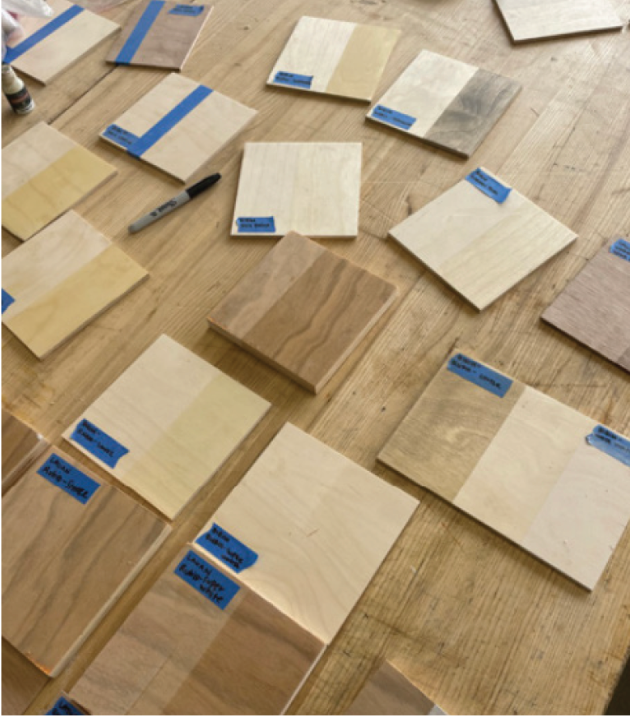
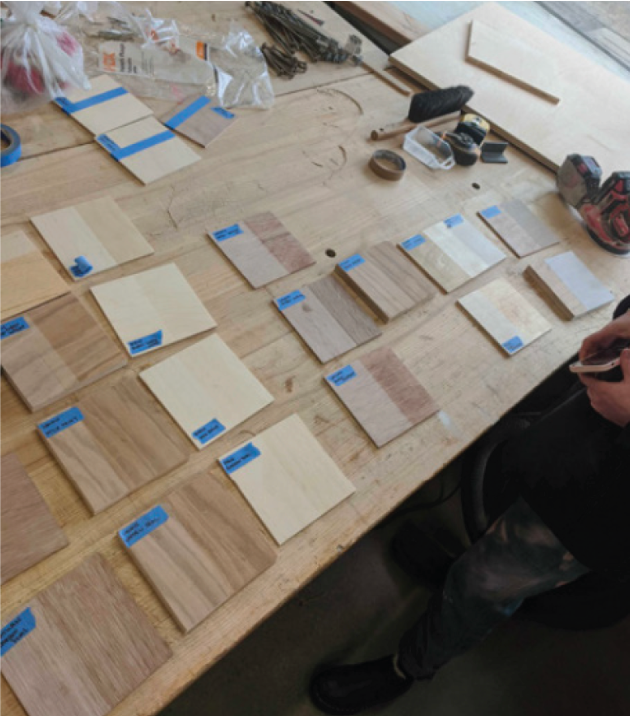
APPLICATION
When it came time to apply the Odie’s Oil to the entirety of the interiors of the structures, we were only re-confirmed in our decision to go Odie’s.
The product retained a very high durability when properly applied and buffed, and left a far softer texture on the plywood. The citrus scent was preferable to other brands’ products, which often smelled artificial if not unpleasant. When applying the oil to the interiors, we were relieved to know that the oils would not be harmful to our skin, nor to the intended residents of the buildings. We found the product went a long way, though the porosity of our particular plywood absorbed more than a traditional hardwood might. Buffing by hand took some time for such a large amount of square footage, but in the end was worth it for the quality of finish that our clients deserved. The combination of ideal aesthetics, robust performance, and natural ingredients made Odie’s the clear winner for a project set in such an extreme, remote climate.

CONCLUSION

Ultimately, this was a fast-paced trial period. The interiors team was juggling a multitude of decisions and was trying to make the most-informed decision in regards to each aspect of the project. We, as the interiors team, do not, and will not claim to be researchers or scientists. The tests that we conducted were simply mockups to find our way to the best product in the amount of time allowed, so although this wasn’t the most scientific and methodical experiment conducted, it did allow the interiors team to mock up a variety of products, to select and make the best-informed decision, at the time, in regards to this particular project.
Additionally, we are incredibly thankful to the team at Odie’s Oil for their guided technical support. They guided us through the application process and were always available to address any questions we had. We have no doubt that they will continue to be a positive and enthusiastic resource in the future. We, at the Colorado Building Workshop, would highly recommend the Odie’s Universal Oil to any project, residential or otherwise, looking to impart an atmosphere of comfort and well-being through their materials.


 FACULTY
FACULTY
- 1. Rick Sommerfeld
- 2. Will Koning
 FINAL PHOTOGRAPHY
FINAL PHOTOGRAPHY
- 1. Robert Cleary
 STAFF
STAFF
- 1. Kate Hartung
- 2. Connor Rumsey
- 3. Casie Hilyard
 CLIENT
CLIENT
- 1. The National Oceanic and Atmospheric Administration (NOAA)
- 2. National Marine Fisheries Service (NOAA Fisheries)
- 3. Antarctic Ecosystem Research Division (AERD)
 PRINCIPAL INVESTIGATORS
PRINCIPAL INVESTIGATORS
- 1. Bespoke Project Solutions
 ENGINEERS & CONSULTANTS
ENGINEERS & CONSULTANTS
- 1. AE Designs
- 2. Dake Collaborative
- 3. KL&A
- 4. The MH Companies
- 5. Mick Cheshire
STUDENTS
 Leo Borasio
Leo Borasio Robert Cleary
Robert Cleary Charles de Pottère
Charles de Pottère Jennifer Dear
Jennifer Dear Ciara DeBusk
Ciara DeBusk Adam Dergosits
Adam Dergosits Casie Hilyard
Casie Hilyard
 Benjamin Jaworski
Benjamin Jaworski Jasmine Jones
Jasmine Jones Caitlin Kennedy
Caitlin Kennedy Taylor Kortas
Taylor Kortas Kathryn Landers
Kathryn Landers Paola Larios
Paola Larios Sean McBride
Sean McBride
 Carson McKee
Carson McKee Peter Myller
Peter Myller Evan Norkosky
Evan Norkosky Adam Sangiolo
Adam Sangiolo Katherine Tardif
Katherine Tardif Jacob Taswell
Jacob Taswell Antonio Valencia
Antonio Valencia Erin Walrath
Erin Walrath

#Antarctic Ecosystem Research Division #Antarctic Marine Life Conservation #Bespoke Project Solutions #Colorado Building Workshop CU Denver #NOAA #NOAA Fisheries #Odie's Oil #Penguins



